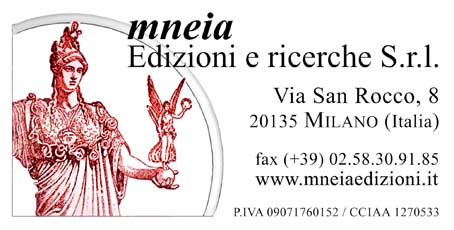| |
 |
|
| |
|
|
MNEIATrust was founded to enhance the value of collected sets in their broader meaning as testimony to a specific moments in history. Such collections are the expression of the various social and cultural historical periods that make up the past or mark the epochs of modernity. Collecting materials enables us to keep their higher qualities alive only when their original condition is preserved over time so as to express their overall structural and conceptual complexity. That complexity bears witness, in turn, to the myriad influences and twisted paths whose pull is felt by each collector. These lead collectors to weave relations that may be linear but are often winding or multistranded while building their own, personal collections.
Sets of collected materials, in their completeness, thus provide historical and social testimony linked to the episodes and circumstances that led to the composition of the collections. In and of itself, the completeness adds in features and hints for research related to the period in which the collection was created. The recall the influences and stimuli that affect the process of building an individual collection.
The topics MNEIATrust is committed to vary in focus and in cultural context, though its main interest is in coins and medals, but are connected by the common theme of bringing to light the image as it reflected in methods and forms of political communication. They are also brought together by the process of identifying the various social groups that the objects relied upon to perform their conventional functions.
Precisely because of the eclectic and multifaceted nature of sets of collected objects, enhancing their value as an image of their era enables us to reconstruct, epoch by epoch, an overall picture of the political habits and a context for the social customs that would otherwise be hard to perceive today. The coins and medals, along with other material artifacts (documents, posters, bills, postcards, functional objects, etc.) were outright participants, not mere witnesses, to phases of history. Through their immediate use, they recorded political and social conflicts, innovations, ferment, and upheaval, expressing their ways of communicating and fixing their symbolic code.
The coins and medals are minuscule, of course, and the papers are at times nearly impossible to interpret. But this does not make them any less important. Historic developments cannot always be judged on the size of the traces that survive. This is especially true for the sphere of daily life and less ostentatious parts of society. They often need to be investigated and reconstructed on the basis of minute clues, imperceptible remainders, single small mosaic pieces. However, once coherently associated, these minor features can often bring to bear meaningful recomposition of the complex overall whole of ‘larger history.’
Keepsake and Memory
From personal keepsake to collective memory – the apothegm sums up the aims of MNEIATrust to conserve, curate, and enhance sets of materials, both public and private. The idea is to simultaneously preserve and bring to light – along with the objects – the precious heritage created by the heterogeneous human and research experiences of the collectors who started and built up these collections.
This initiative stems from the realization that, in most cases, any relevant personal vicissitudes in the collector’s life and in the development of the restituted material are factors reconstructed after the fact. At the time of this reconstruction, the memory – be it recent or remote – lacks evidentiary support and has become labile, if not altogether faded, not only due to the passage of time but because of the discontinuity of human experience.
MNEIATrust’s purpose is to provide as complete a picture as possible of the objects in the collections that are made available. The usual, often arbitrary, reworking of the past is replaced by a commitment to construct the memory of the present so as to make it into a memory for the future.
The first concrete product of the MNEIATrust initiative can be seen in the volume illustrating the coins of the Sabetta Collection, which were acquired by the Gabinetto Numismatico e Medagliere della Raccolte Artistiche. The institute showed immediate interest in the proposal to catalogue and publish the collection, even making available to researchers the archive that contains Sabetta’s papers, notes, and correspondence. This afforded an opportunity to reconstruct the human events and the choices that led to the collection’s creation.
The collections currently involved in MNEIATrust represent both a broad variety of interests and a multitude of cultural horizons. They are connected by a common thread of attention to the composition of the collection and the ways, which vary from one collector to the next, in which the choice of materials found expression.
Some of the sets of materials have already given rise to research that will find its way into print or into digital compendia. Many projects are ongoing, including the analysis of the unusual communication features in postcards printed from the end of the nineteenth century through the first two decades of the twentieth, the cataloguing of a collection of coin weights and scales, and the collection of material related to the reign of Pope Pius IX, featuring medals, decorations, insignia, plaques, and documents from the period.
|
|